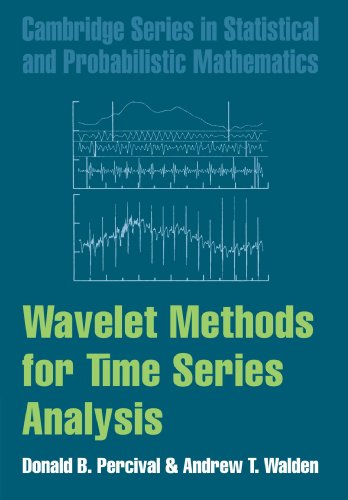Wavelet methods for time series analysis by Andrew T. Walden, Donald B. Percival

 Download eBook
Download eBook
Wavelet methods for time series analysis Andrew T. Walden, Donald B. Percival ebook
ISBN: 0521685087, 9780521685085
Page: 611
Publisher: Cambridge University Press
Format: djvu
Mit civil mit foreign languages literatures. In this paper, classical surrogate data methods for testing hypotheses concerning nonlinearity in time-series data are extended using a wavelet-based scheme. This gives a method for systematically exploring the properties of a signal relative to some metric or set of metrics. Data mining research, based on time series, is about algorithms and implementation techniques to explore valuable information from a large number of time-series data. . We also fit Finally, we find that a series of damped random walk models provides a good fit to the 10Be data with a fixed characteristic time scale of 1000 years, which is roughly consistent with the quasi-periods found by the Fourier and wavelet analyses. Topics in Brain and Cognitive Sciences Human Ethology, Spring 2001. We analyzed electroencephalography (EEG) data from 15 participants with ASC and 15 typical controls, using Wavelet Transform Coherence (WTC) to calculate interhemispheric coherence during face and chair matching tasks, for EEG frequencies from 5 to 40 Hz and during the first .. The second approach focuses on . The first approach focuses on power spectrum analysis techniques using a signal representation approach such as Wavelets to elaborate on the differences in classification results. Time Series Analysis, Fall 2002. Artifact areas were present in the signals, potentially because of contact and other sensing. Econometricians study time series from the point of frequency methods (spectrum analysis, wavelet analysis) and the methods of time domain (cross-correlation analysis, autocorrelation analysis). Starting with the raw data, temporal trends and spatial noise were removed by linearly detrending the time series for each grid cell and then applying a three by three Gaussian filter. Thus, a wide class of analyses of relevance to geophysics can be undertaken within this framework. The complexity of the system is expressed by several parameters of nonlinear dynamics, such as embedding dimension or false nearest neighbors, and the method of delay coordinates is applied to the time series. The OCW Finder Wavelets, Filter Banks and Applications, Spring 2003. The WT has developed into an important tool for analysis of time series that contain non-stationary power at many different frequencies (such as the EEG signal), and it has proved to be a powerful feature extraction method [16]. As EEMD is a time–space analysis method, the added white noise is averaged out with sufficient number of trials; the only persistent part that survives the averaging process is the component of the signal (original data), which is then treated as the true and more physical meaningful This requirement reflects the evolution of time series analysis from the Fourier transform, to the windowed Fourier transform (Gabor 1946) and on to wavelet analysis (Daubechies 1992). Topics in Combinatorial Optimization, Spring 2004. Wavelet Transform Coherence (WTC) analysis overcomes the problem of non-stationarity by providing a time-frequency analysis of the coherence between two time-series x and y [42,50].

